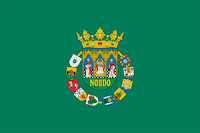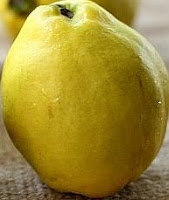
I was recently asked why I blog? The fame? The accolades? The enormous amount of business the blog brings to my store? Yeah right, about that day job?
This blog is about, "We Know Yum! Musings, reviews, tips, hints on: food, recipes, articles, green living, organic gardening and farming from Good For You Market and Farm, Lewes, DE." It's mostly about food, since, well, that's what I mostly do! It's my experience of making a business out of my interests, and out of necessity. I could not find authentic food and ingredients at the beach. I started a 'natural food store,' and it evolved into a good, food market. Gourmet schmourmet. It's food after all, let's not take things too seriously, but let's get it right, food should taste like it should taste! That being said, if I buy cheddar cheese, I want to know it's a good cheddar cheese. "American Cheese" is not cheese. Cheeses that are made in America are American Cheese, and we in America have many fine artisan cheese. In fact we have a cheese revolution under way in the USA. I digress. If my cooking club has dealt me the appetizer course for Italian American Heritage month (October, by the way!), then I want to know where to get good Mozzarella, and do I need Perle, Bocconcini, or Ciliegine? What about Buffalo Mozzarella? Is it made in Buffalo, NY? Chiogga Beets, Broccoli Rabe, Fennel? Where do I get them and what do I do with them?
I may Know Yum and own/operate/manage a food market, but at the end of the day, I have the same learning curve and time pressures we all have. I love to eat, I'm insatiably curious about the world around me. I'm fascinated by technique. I love to write - it helps me process what I'm doing, sort through what I'm learning, figure out where I need to prioritize available time to delve deeper. It keeps me on my toes and keeps inertia at bay. I thrive on being busy and having lots on the go at once. Blogging is a way of me to categorize, preserve, make sense, share what I've learnt in the hope that it may stimulate others to try, or share their experiences.
We all eat, right? Life's too short to eat bad, inauthentic food. I want my food to be as authentic as possible. Take cheese for example. I find the more I learn of fine cheeses, paradoxically, the less quantity I eat. I'm learning to appreciate subtlelties in flavor that are just lost if I over do it.
Right now I'm on a wine and a Spanish food kick (not necessarily Spanish wines). I've had enough of the confusion over 'varietals' and the financial/quality crap shoot when buying wine. If the store couldn't tell me, I decided to educate myself so I know the questions to ask at the wine store. I picked Pinot Noir to start with. I'm having so much fun learning about where the Pinot Noir grape is grown, and how local climate affects the resulting wine. Now I understand why Pinot Noir seems to average a higher price than other wines: it's a fussy grape, low yielding and difficult to grow. So if I'm to spend $50 on a bottle, I want to know what makes it a $50 bottle and why that's different from the average of $25 a bottle. My reading tells me that New Zealand and Oregon have similar climates so their Pinot Noirs are very similar. So, I should notice that, right if I buy a bottle of each region? I should notice the similarity between a French Pinot (don't even get me started on the Bordeaux path - oy!) and a Californian? Why is that New York state grapes (Pinot Noir included) have a higher level of resveratrol than others? I find that fascinating. I'm a complete food and beverage geek!
G4U Market is entering the world of Charcuterie (separate blog entry on that one!). No Charcuterie department worth its salt (pun intended!), would not carry the world's finest cured hams: Jamón Ibérico and Proscuitto. IMHO, Jamón Ibérico is the superior, but hey, Proscuitto - not too shabby either. If you're going to pay the premium price that Jamón Ibérico commands, then you'd better know you're in good hands, right? You want your deli guy/gal to know when, where, and how. You want a story with your ham, Ma'am? Spain, I'm learning, is a fascinating country, with no one identifying cuisine. Geographical and historical concerns have painted a palette of regional food culture. The impact of geography and religious groups on Spanish cuisine is a fascinating story. I'm fortunate to be in the position of researching this for a living (hopefully!).
I'm fascinated by what I'm discovering and I couldn't imagine someone else wouldn't be also. QED - blog. How much cured Jamón Ibérico does one need to round out a stew? How much pushes a salad over into a taste explosion? Can you really taste the difference between the three grades (and prices) of Jamón Ibérico? There's Jamón Ibérico Bellota (with the Black Iberian Pig foraging in the wild for black acorns), Jamón Ibérico de Recebo (pastured pigs fed a mix of grain and acorns), and Jamón Ibérico de Cebo (pastured pigs fed only on grain). When shopping around for spices for my store, I've enjoyed a fascinating diversion into the world of Moorish Spain. Andalusian cuisine is much the richer for cumin, coriander, nutmeg, and of course, saffron. Where would the rest of the world be for Saffron were it not for La Mancha? Did you realize the majority of the world's garlic comes from La Mancha (sorry China!). I also learned this week of the exchange of crops during Columbus' Voyages of Discovery. Where would Spanish cuisine be without the early patronage of Queen Isabella? We don't know much of Spanish cuisine in the USA. Consider, however, where our popular dishes would be had Columbus landed much further north. We might be living in a land of Spanish delis instead of Italian!
So, in a world of 24x7 google and smart phones, why do I add my voice to the mix?
Short answer. I blog because I want to share the yum! I'm fascinated by technique and all things food and drink. In life, anything I do, I want to do it well, and want it to be authentic. As a retailer and grower if I'm to carry a product, or grow a variety of vegetable, I want to know everything I can about it. I enjoy cooking because it's a hobby, it's makes me better at my job, it calms me, and it feeds my family (and occasionally my staff and customers!).
Longer answer. At the risk of hubris, it's
my voice. This is my experience - grown out of my particular circumstances - I own a specialty food market in an area of the country quite some distance from the choices urban areas typically bring. I want to know that in this area, if I need saffron, I can find it. Decent cheeses, bread, oils, vinegars. Got that covered. I want to be comfortable that the product is fairly priced and works for my budget. I want to know that the person selling it to me knows what to do with it and how much to use, how long it stores.
So, is the blog a shameless plug for my business? Of course, I need to earn a living! I'm trying to earn a living doing what I love. However, you can listen to my radio ads if you're interested purely in an ad for my business. This blog is about sharing my experiences. There's a reason the header photo is of me slugging the wine in my home kitchen and not me in the store. My experience is dualistic: retailer and consumer. I take the same approach to learning about food whatever side of the retail counter I'm standing on - retail buyer or consumer. So, as I dabble and learn, I share along the way. It's not about what I'm not (I'm not a professional chef, for example). It's about what I'm learning. For example, if having the appropriate knife and cutting technique helps me in the kitchen, then I learn knife skills. Or is that, life skills?
Some people have complained to me that my blog entries can be too long. I wasn't aware of a mandate. Some are short, some long. I don't editorialize in the way that I'm forced to when covering the same material for say, a magazine article. My blog is my opinion on my experiences. I hope it is of value to someone.
Experiment with Yum. Be fearless. Be curious. Curious people are so stimulating to be around.
Now, back to the annual Matanza in La Mancha. Poor pig. Thank you for your gift. I hope it was quick and painless.
 Good For You Market is now closed at our Route 9 location in Lewes, DE!
Good For You Market is now closed at our Route 9 location in Lewes, DE! 
































